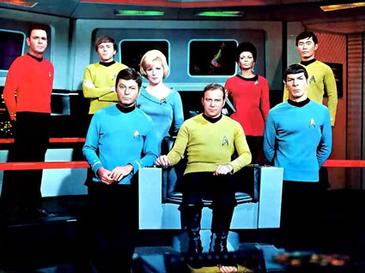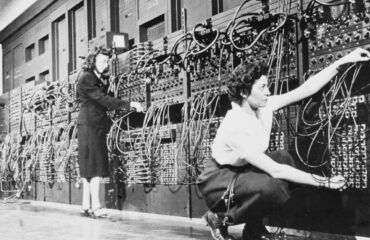
The crew of the Starship Enterprise, in the original Star Trek series 1966-1969
What technologies fired your imagination as a child?
There were a few that fascinated me in my elementary and high school years, including the operation of gears and clutch on my dad’s 1950’s vintage tractor. Photography was a passion for many years, beginning around the age of 10 when my great aunt gave me her old Kodak Pony camera – the kind where you had to set the f-stop and shutter speed combination manually which helped me to learn best ratios of one to the other for desired focal depth and lighting. Later I would develop film and print my own black and white pictures. Somehow black and white photographs trigger my imagination, maybe it’s the way they display depth using gradients of density – light and dark – in shades of only one uniformly black colour.
Space technology was what really did it for my young imagination, more than anything else. I remember watching with amazement the Apollo 15 moon landing in the summer of 1971, and a few years later I discovered the original Star Trek series that first aired in three seasons from 1966-1969. I am still watching the reruns, every Monday night, having seen every episode at least a dozen times but every time discovering some new angle.
I imagine a younger person now, raised in recent times with advanced computer graphics and imaging technologies, would likely give no time to the original Star Trek. Compared to today’s offerings, the technology of Captain Kirk and his crew can seem old-fashioned, the same way a manual typewriter with hammers and ribbon is to a laptop computer or a rotary dial landline phone is to the latest handheld phone. But for me, that’s part of the appeal of the original series – it reminds me that it is a human creation and human creation continuously reflects events in time. I can imagine myself there, on that bridge of the Starship Enterprise, even now decades later. It seems human-scale, somehow like being in a stage play with a live audience. As hyper-realistic as the space technology in recent productions is, I have a much more difficult time placing myself in more graphically enhanced scenes.
Don’t get me wrong, it’s not that I don’t enjoy current depictions of space technology – most particularly and recently in The Expanse. What draws me to the Expanse is the same thing that has always drawn me to the original Star Trek – it’s the story that they tell and the philosophy they convey.
The Expanse presents a remarkable and deep story of politics and the human character with a unique story line. The episodes of Star Trek were compelling especially for their philosophical messages delivered with natural interaction between Kirk and the crew members, each of them a unique character with strengths and flaws like the rest of us. It was of course very forward for its time in presenting a multinational crew, during the Cold War era when fear among nations prevailed with the ever-present threat of nuclear war. There was a moral to each Star Trek episode, one that spoke of peace and hope for the future while showcasing the strength and ingenuity of the human spirit.
A number of Star Trek episodes stand out in my memory, including “Assignment Earth” in which young Teri Garr made a name for herself and Robert Lansing played an advanced alien whose mission was to prevent nuclear war on Earth. We could use the help of Gary Seven, the alien played by Lansing, at a time like now. “Metamorphosis” is another, in which an alien energy force named The Companion falls in love with a marooned scientist who has to choose between it and his human rescuers. “The City on the Edge of Forever”, written by Harlan Ellison, starred Joan Collins as a worker in a 1930’s depression-era mission feeding the poor who becomes entangled with the Enterprise crew when they travel back in time and risk changing the course of history.
My favourite of all time has to be “Who Mourns for Adonais”, a title taken from a line in a Shelley poem. The episode features a Greek god claiming to be Apollo who traps the Enterprise in orbit around a planet that he alone occupies. Apollo is lonely, and when Kirk and crew beam down to the surface Apollo demands that they worship him. Apollo demonstrates his power to force their obedience, while promising to care for them as a parent would children. Human ingenuity, as always, prevails and the Enterprise is able to locate and destroy Apollo’s power source. Kirk’s line at the end, spoken to Apollo, is what I remember most: “We have outgrown you. You ask for something we can no longer give.” Those words contain much relevance now, to those who pretend to be god and rule with an iron fist mistaking the human spirit for something they can own.
It fires my imagination still, as I reflect on that technology that played a role in so much that we have now today. What technology do you recall, from your youth, that inspired you?
JM



